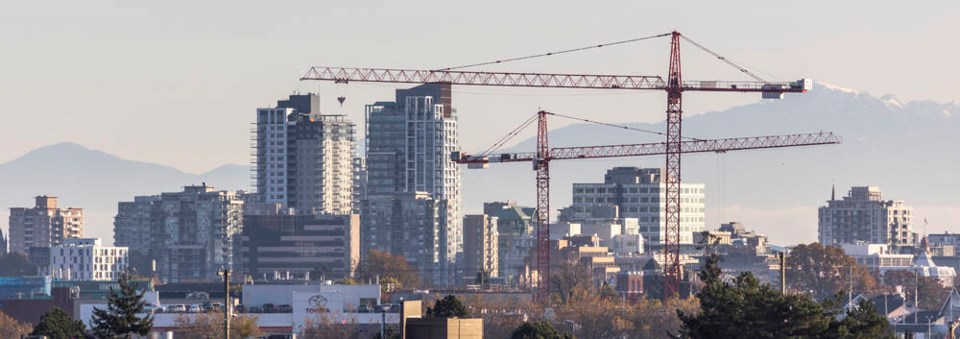A commentary by the CEO of Habitat for Humanity Victoria and a professional urban planner. He previously was head of real estate, sustainability, and environment for TELUS and headed B.C. Investment Management Corp.’s real estate development investment portfolio.
It was encouraging to hear many candidates campaign for more housing and win seats last election. It’s time we should expect to start seeing dramatic changes in the way that municipalities plan and approve housing.
Recent provincial announcements and focus on housing won’t make a difference unless we make changes at the local level of government.
The housing crisis has a lot to do with inadequate municipal urban planning, lack of political action, the disintegration of globalization and easy access to cheap credit which have driven up asset values. These factors have led to a significant increase in home prices making home ownership unattainable for most Canadians.
To achieve affordable housing in Canada, the Canada Mortgage and Housing Corp. estimates that more than 3.5 million new homes must be built by 2030. In British Columbia, CMHC flags 570,000 new homes required by 2030, however this calculation is based on no additional immigration to the province over that time.
What can be done? Build a lot more housing. At a high level, more supply means lower prices and therefore affordability. It requires a new contract in the relationship between existing and potential future residents who need a voice and seat at the planning table.
It requires acknowledging the shift from a static, never-changing Capital Regional District, to a great city that is always growing, evolving, changing.
To increase housing supply in B.C., the recommendations of the 2021 joint B.C.-Canada Expert Panel report Opening Doors can be implemented.
Changing municipal planning practices and removing regulations that increase the cost of new housing will also help. The province should set clear new housing targets for municipalities and be prepared to take over the planning functions from municipalities are politically unwilling to provide an adequate supply of new housing.
A study by the C.D. Howe Institute in 2020 found that housing supply restrictions in B.C. increase home prices by an average of $230,000.
The good news is that municipalities also have the tools to address the housing crisis. Immediate actions and solutions municipalities can undertake include:
• Modernize municipal planning by amending official plans to increase permitted densities by a significant amount to meet future demand, then ensure zoning by-laws are updated to match. This means ensuring that missing middle and all forms of housing are included.
• Mandate development approval timelines to ensure the process is efficient. Alberta and Ontario have strong systems for this that can be easily implemented where approvals are talked about in weeks, not years. Municipal leaders should also prioritize affordable housing projects over concerns of NIMBYism (not in my backyard), as research from Habitat for Humanity in 2022 shows that 63 per cent of Canadians believe municipalities need to do more to combat this issue.
• Minimum density requirements should be established to increase housing supply and reduce problematic development standards such as minimum lot size, setback, landscape areas, parking, and building height. It is also important to restrict the municipality’s ability to comment on architectural matters, such as building design, to only qualified advisors.
• Fees and charges need to be lower, clear, and pre-established. Growth should pay for growth, but no more. Government fees, costs, and taxes add 20-30 per cent to the cost of a new home, according to the CMHC. Building permit fees levied on all new construction should be based on cost recovery and not used as a source of unearned municipal revenue. Fees and charges should be directly and transparently tied to growth-related infrastructure improvements.
• Community Amenity Contributions should be restricted or eliminated. These contributions, which involve municipalities negotiating and granting extra density to developers in exchange for financial compensation or community amenities, may lead to conflicts of interest such as artificially low planning density to gain greater payouts. Housing density should be properly planned from the regional growth plans down to zoning bylaws. Research indicates that levying these contributions reduce land available for development, restricting supply and increasing housing costs.
• Municipalities need to prioritize housing affordability by removing requirements that increase building costs. This includes avoiding costly decisions and requires, such as banning natural gas from new construction, or requiring extra parking, or having bylaws that restrict efficient use of land and higher housing density, such as onerous tree preservation bylaws that are weaponized to obstruct housing.
While this list is not exhaustive, if municipalities enacted these along with recommendations in the Opening Doors report, we’d be off to a good start. As advocates for affordable housing in the CRD, we can work towards solutions by encouraging our elected officials to act as promised.



